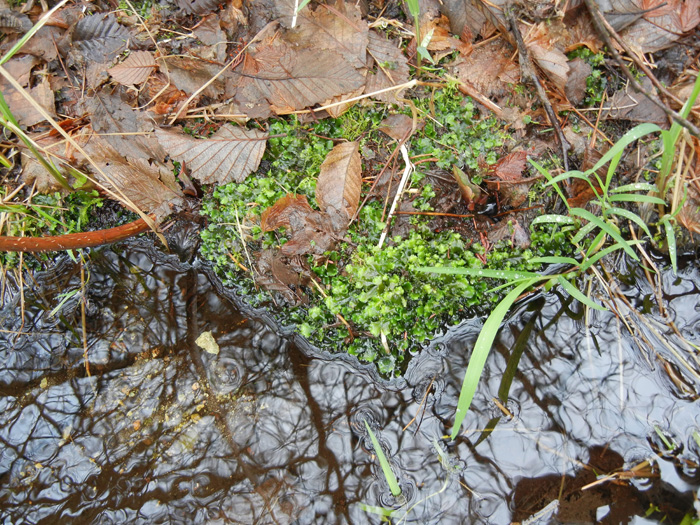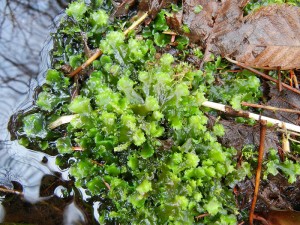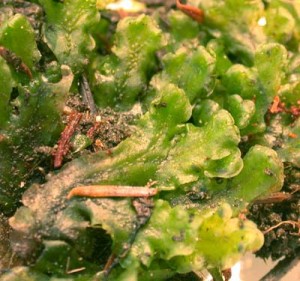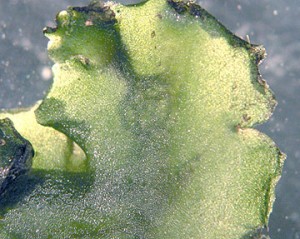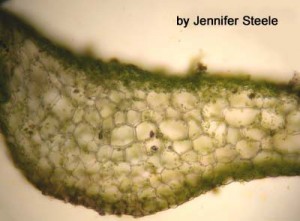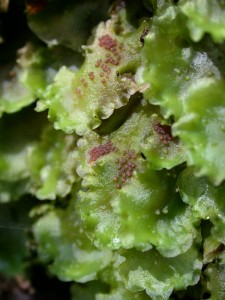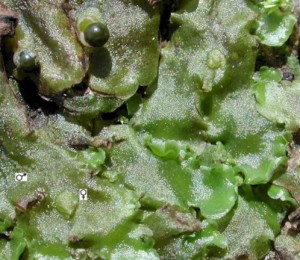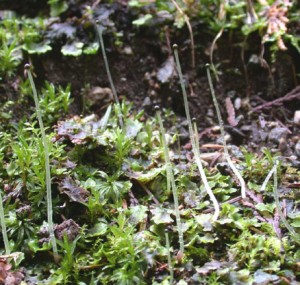Habitat
Pellia neesiana can usually be found growing on damp mineral (inorganic) soil in shaded and wet sites, along steam-banks, lake-shores and swampy areas.
Gametophyte
Overall structure:
The thalli of P. neesiana are generally flattened and smooth, dark to rich green in color and form extensive mats of overlapping lobes.
Thallus:
When branching occurs in this species it is typically irregular. The middle of the thallus is multistratose and is generally where you can find rhizoids. As you near the unistratose margins, the thallus appears somewhat translucent and the edges are often wavy.
The thalli are composed of parenchyma cells, as seen in this cross section. Although the dorsal cells have most of the chloroplasts, many complex oil bodies per cell can also be observed.
Rhizoids:
The rhizoids of this species are unicellular and smooth walled, which are located on the middle of the thallus.
Male Gametophyte:
The male gametophyte can be distinguish due to the small and regular protuberance on the middle surface. The antheridia are housed in chambers.
Female Gametophyte:
The gametophyte is female if there are small and sleeve-like lobes in the middle of the thallus, which are the involucres.
Sporophyte
Overall structure:
A shoot calyptra is present in this species and its sporangium is rounded.
The seta elongates when conditions are right. They can get very long. This picture was taken at Camosun Bog.
Once the sporangium opens, there is a wholly mass of elaters inside that serve as an aid to disperse the spores.
Seta:
The cells of the seta are elongate and thin-walled.

